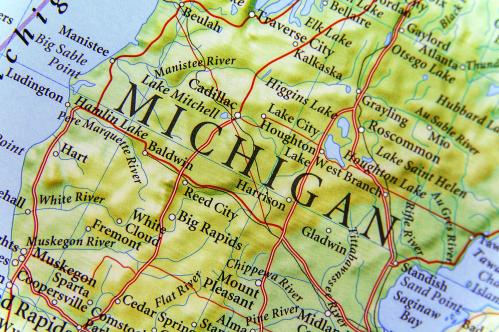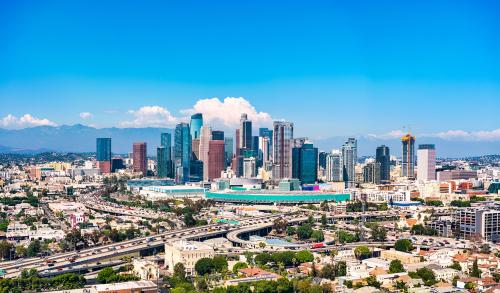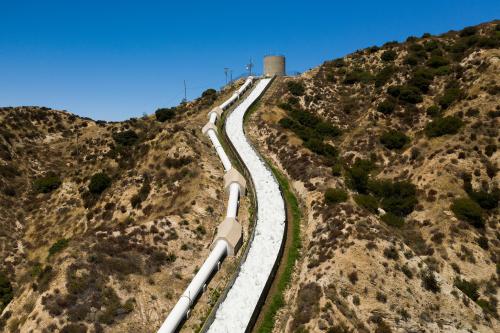This summer, in A tale of two Rust Belts, I explored how diverging economic paths in the Great Lakes region help explain political patterns we are seeing today. Since last year’s election in which Rust Belt states delivered the decisive victories for President Trump, interest in the economic plight, anxieties, and frustrations of the residents of these communities has been intense.
Yet the region’s economy is not the only factor behind its shifting politics. Its unique demographic and racial geography matters, too. While recent events in Charlottesville and debates throughout the South over removal of Confederate statues have focused the nation’s increasingly heated discussion of race on that region of the country, the sharpest black-white racial divides and most intense segregation in the country today can be found in the older industrial city-regions of the Midwest. Indeed, the white supremacist charged with Heather Heyer’s killing in Charlottesville traveled from Maumee, Ohio, outside of Toledo.
Fully 15 of the nation’s 25 major metro areas with the sharpest black-white segregation are in the Rust Belt region. This reflects several historical trends, including the Great Migration—black and white—from the South and Appalachia to the mills, factories, and machine shops of northern cities; the clash and subsequent flight of white residents from these cities; urban renewal and highway building that destroyed black communities and aided white flight; and the strict housing and education policies that enforced segregation in the North, made vividly clear in Richard Rothstein’s The Color of Law.
And now, immigration has become an unambiguous factor in this racially charged Midwestern landscape. While immigrant-rich states like Arizona, California, and Florida are often at the center of immigration policy discussions, the political debate about the role of immigrants burns hottest in the heartland. For years, these communities have hemorrhaged population to the Sun Belt and other parts of the country. But legal immigrants have kept coming.
Evidence shows that immigration has benefited the Rust Belt demographically and economically. A steady stream of immigrants from Mexico, Central America, Asia, Africa, and the Middle East—a very different immigrant population than the Europeans who settled in the Midwest beginning more than 150 years ago—has slowed the hollowing out of the region’s bigger cities and small factory towns in recent decades. In most of the Midwest today, immigrants are a major source—and in some communities the only source—of population and new business growth. According to the Chicago Council on Global Affairs, from 2000 to 2015, non-native born populations in Midwest metros grew 34 percent (more than 1 million people), and accounted for 37 percent of all Midwest communities’ population growth. From Racine and Janesville, Wis. in the west, to Akron, Ohio and Erie, Pa. in the east, growth in immigrant populations has compensated for losses or outpaced modest growth of native-born populations.
Despite these upsides, immigration has added to the region’s sharp racial fault lines. Historic black-white segregation patterns now extend to divisions among black, white, and brown, with consequent impacts on the region’s social and political dynamics. Whites in suburban enclaves of the larger city-regions, and blue-collar white populations that fled the mid-sized and smaller cities for small towns and rural areas nearby, are seeing (and being told by some to fear) growing populations of Asian, Latino, and Arab-American immigrants in their communities, as well as a more mobile black middle class. Michigan provides stark examples of this relationship between shifting Rust Belt demographics and politics. In Macomb County, perhaps the largest county of predominantly white, working-class voters that swung for Trump (in numbers large enough that on their own they may have moved Michigan into the Trump column), incomes are up again with the Detroit auto industry rebound, and population is actually growing. But all the recent population growth in the county—3 percent over the past six years—has come from minorities, as the white population continues to drop. New residents include a 34 percent increase in African-Americans, a 27 percent increase in Asians, and a 14 percent increase in Latinos. And migrants from abroad account for fully 60 percent of the county’s recent population increase. But these minority and immigrant population gains are concentrated in a handful of Macomb’s 20-plus cities and towns. While all Macomb communities saw movement from the Democratic column in 2012 to Trump in 2016, in magnitudes ranging from 1 percent to 14 percent, the shift was greatest in the white enclave communities.
Yet there are exceptions; communities that are bucking the tide, where black/white racial fault lines have been softened a bit, and new immigrants are being purposefully integrated into the community:
- In the Detroit suburb of Oakland County (which stayed Democratic in 2016), communities such as Troy, Southfield, and Auburn Hills have seen growth among immigrants and African-Americans amid a more integrated residential landscape.
- The once-Polish enclave of Hamtramck just outside the city of Detroit is now a diverse, multi-racial, multi-ethnic (and newly economically vital) small city, resembling parts of today’s Queens, New York.
- Washtenaw County to the west, home to the University of Michigan and Eastern Michigan University, has attracted a highly educated and diverse community.
- Further west, Kalamazoo has successfully helped reverse white flight and the seemingly inevitable and intractable segregation found in very similar older industrial cities in the Rust Belt, thanks in part to the Kalamazoo Promise, which guarantees a college education for all student residents.
- Even in polarized Macomb County, there are communities like Sterling Heights where local political leaders have organized robust immigrant and ethnic welcoming programs and services designed to highlight the benefits of a changing population to the community.
In Michigan, our statue debate concerns whether to remove one depicting former Dearborn mayor and notorious racist, Orville Hubbard. It gazes over a once lily-white, now 50 percent Arab-American, thriving community. The communities that are making some progress at racial and ethnic inclusion seem to be doing better economically and are less likely to have voted for Trump in 2016. We should reap any insights about what makes these successful transitions possible to inform the economic and community development strategies around the rest of the Rust Belt.
John Austin directs the Michigan Economic Center, and as a Nonresident Senior Fellow at Brookings, created and led the Great Lakes Economic Initiative.
The Brookings Institution is committed to quality, independence, and impact.
We are supported by a diverse array of funders. In line with our values and policies, each Brookings publication represents the sole views of its author(s).








Commentary
Segregation and changing populations shape Rust Belt’s politics
September 14, 2017